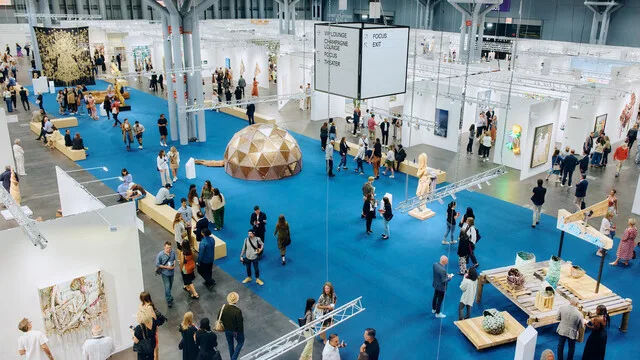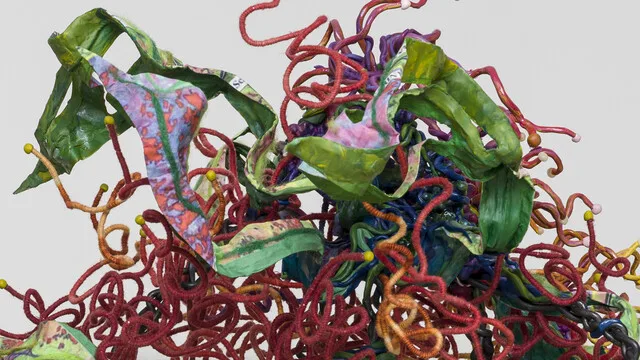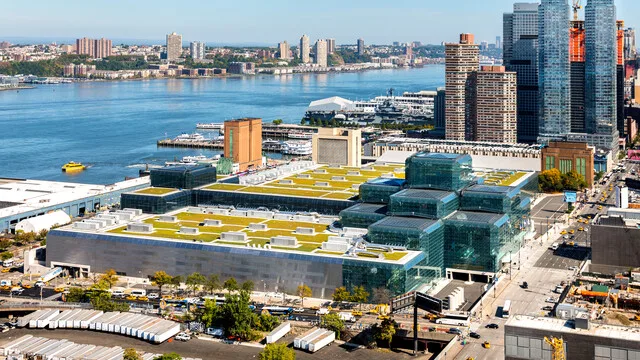September 8, 2025 – New York- USA
The global art world descended on New York this past weekend as The Armory Show successfully jumpstarted the city’s art market after a noticeable summer lull. The annual fair, held from September 5-7 at the Javits Center, drew in thousands of collectors, curators, and art enthusiasts, reaffirming its status as a vital anchor in the American cultural landscape.
This year’s edition was particularly significant as it followed a challenging period for the market, with several galleries closing their doors and a general sense of caution among buyers. The fair’s energetic atmosphere and strong sales provided a much-needed jolt of optimism, proving that despite economic headwinds, the passion for art remains a powerful force. The event saw a strong presence of both established and emerging galleries, showcasing a diverse range of works and cementing New York’s position as a global art hub.

Headline Points
* Market Rejuvenation: The Armory Show 2025 served as a crucial catalyst for the New York art market, injecting a wave of new energy and confidence after a summer marked by gallery closures and market contraction. The fair’s strong performance is seen as a positive indicator for the fall art season.
* Diverse Exhibitor Base: With over 230 galleries from 35 countries, the fair showcased an impressive international lineup, blending returning favorites like Andrew Kreps and White Cube with new voices and diverse presentations.
* Artistic Highlights: The fair featured a wide array of significant works, including a notable focus on Black artists from the American South. A major highlight was the sale of a painting by Kehinde Wiley on the opening day, setting an early tone of success.
* Celebrity and Social Buzz: As is tradition, the fair attracted a notable crowd of high-profile attendees, from A-list celebrities and fashion designers to prominent business figures, adding a layer of social dynamism and media buzz that amplified its cultural significance.
* A New Direction: Under the new direction of Kyla McMillan, the fair continued its evolution, providing a platform for both blue-chip artists and compelling new talent, ensuring its relevance for a broad spectrum of collectors and enthusiasts.
The summer of 2025 had been a difficult one for the art market. Reports indicated a “contraction of the high-end market” and a shift in collector behavior, with many buyers becoming more cautious and favoring private sales. The financial pressures on galleries, particularly in expensive cities like New York, led to a number of closures, prompting concerns about the industry’s health. In this context, the anticipation for The Armory Show was palpable. Art advisors and collectors were looking to the fair as a barometer for the market’s resilience and a test of its ability to rebound.

This year’s fair, held in its new home at the Javits Center, was a sprawling and comprehensive affair. The main Galleries section featured a kaleidoscope of global practices. Veteran New York and international galleries presented ambitious solo and group shows. Among the most talked-about presentations was a powerful exhibition of works by Black artists from the American South, featuring monumental pieces by Thornton Dial and assemblages by Lonnie Holley. The fair also saw strong interest in the works of established contemporary artists. The sale of a painting by Kehinde Wiley for $265,000 was an early indication of robust sales, while galleries like White Cube and Victoria Miro also reported significant interest in their artists.
Beyond the main section, the fair’s curated sections, including “Presents” for emerging galleries and “Focus” for specific thematic exhibitions, garnered considerable attention. This approach ensures that The Armory Show is not just for blue-chip art, but also a platform for discovering new talent and engaging with challenging, timely themes. The “Presents” section, in particular, was a hotbed of activity, with galleries showcasing artists like Emily Coan, whose paintings explored themes of storytelling, and Ally Rosenberg, who navigated sexual identity and religion in his allegorical works.

In a city known for its vibrant energy, The Armory Show brought a sense of collective purpose. The fair serves as a homecoming for the international art community, and this year, the sense of reunion was even more pronounced. The corridors of the Javits Center were a who’s who of the art world, from top collectors and museum directors to renowned artists and critics. The fair’s reputation as a cultural highlight also ensures a strong celebrity presence. The opening preview was a social spectacle, attracting a range of stars from the entertainment and fashion industries, who came to admire the art and be part of the scene. This celebrity magnetism generates invaluable media attention, which helps to draw a wider public audience and reinforces the fair’s cultural relevance beyond the art market itself.
The success of The Armory Show 2025 is a testament to the art market’s enduring appeal and adaptability. It demonstrated that even in a climate of uncertainty, quality art, coupled with an expertly curated event, can draw significant investment and reignite a sense of confidence. For New York, it was a clear sign that the city’s art ecosystem is alive and well, ready to move beyond the summer doldrums and embrace a vibrant new season.
